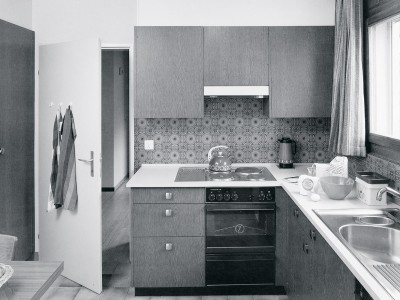
How much space does happiness need?
A charming and philosophical mental journey of columnist Daniele Muscionico.
Yesterday, I hit my head against my happiness. Which, actually, was spot on: happiness is something one must feel! All else is mere contentment. And contentment, that stepsister of happiness, has a bad reputation . . . but that’s another story.
So to continue this one, I shall enumerate its dramatis personae: an ancient roof beam, a back no longer so flexible, knees likewise after the passing years, and bang! – mishap accomplished. My room of happiness had made its mark upon my forehead, and said mark proceeded to broadcast itself with an astonishing array of colours. With such evident damage to my front fender, “How are you doing?” was a question invariably asked with a wry grin.
“I’m fine, in fact I’m fortunate, just look at me,” I would reply, proud of the emblem gracing the front of my dome. For it bore an inscription, readable by anyone with the urge: my happiness leaves little space for manoeuvre. And that is because my great happiness is the small attic of a French country house.
How much house does one need? America’s national alternative poet, Henry David Thoreau, posed himself this question from 1845 to 1847, becoming his own experimental subject while living in a Massachusetts forest cabin built by his own hand. Was his part-time opt-out an achievement? Let it not be forgotten that Thoreau had a supply of ready-cooked food delivered by his mother and sisters every Saturday.
How much house does one need? How much space does one person need? A question asked by Thoreau, Le Corbusier with his Cabanon concept at Cap Martin, and many others. It lives on today in the Tiny House movement. When space is effortlessly at one’s disposal, those minuscule structures might be perceived as cute. But anyone who must first struggle for space asks no questions concerning its significance. Such strugglers know just what they are struggling for. The writer Virginia Woolf advocated “A Room of One’s Own” as prerequisite to a woman’s self-determination in life. And that was less than a century ago.
My hidden microcosm of happiness is an attic. Why? Thanks to its intrinsic nature. An attic is a room that makes no demands on me. It is simply there and simply beautiful. It doesn’t pout; indeed it is unassuming in a way like no other room in a house. It puts itself at one’s disposal: unsullied, authentic, undemanding, with a selfless heart.
“The attic is a room without expectations of me; everything it needs for fulfilment is already present.”
Neither need I furnish an attic, a creative faculty that I lack in any case. Others have already done the decorating for me; the ideal interior designer is simply the passage of time. I don’t need smart lighting fixtures for illuminating the room to best advantage; it has ambient light that shifts with every hour of the day and night.
I stand in my attic without the need to puzzle over my preference in fellow lodgers, who to invite here and how to entertain them: the attic’s denizens lead a merry life both in and out of my presence. And their merriment would appear to be greatest when I interfere as little as possible with their lives. They are here; I am not alone. I can hear those denizens a polite distance away through the ceiling. The nocturnal stomping and groaning of unseen company in a French attic is a chanson in itself.
The attic is a room without expectations of me; everything it needs for fulfilment is already present. Old, discarded dreams enliven it. Its truly homelike character resides in the scents of wood, leather and fabric. Its cobwebs capture time in the form of dust and insects, glinting under the sun’s incoming rays. The attic is a rare example of a happy room. It is an abode of happiness; happiness abides here.
And since it is like this, I myself am a disappointment. I am a disappointment to all who praise our house in the supposition that a householder’s joy takes in his house as a whole. No – not so!
The spatial proportions, of course, are oh, là, là. The light, the warmth in winter, the coolness in summer, all of this is indisputably de première qualité. Add to that the ancient granite walls, caulked by masters of a trade long since grown extinct. Their ancestors in turn saw to it that Paris today has indeed become Paris as it existed in the mind and maps of Georges-Eugène Haussmann: the maçons de la Creuse, the masons of the Creuse, built many of the modern boulevards, squares and arcades of Paris.
Tant pis. This house, a maison de maître, is a home that demands an attitude of its inhabitants. The garguantuan floor expanses, the colossal ceiling height: here is megalomania run amok in its consumption of cubic space. The urban environment conditions one to humbleness. Under these rural circumstances, Jane Doe immediately becomes Madame Pompadour. Yet, what to do with the plenitude of airiness, light and characterful atmosphere? Where is the flat screen that would furnish the broad and lofty living room? And where would one find a model matching the ancient granite walls? Ought there to be a ping-pong table placed in the grand salon, to lend it at least a touch of disorder?
So many questions, but no answers. Up in the attic, the wood groans in agreement with me: happiness brings along its own furniture.


